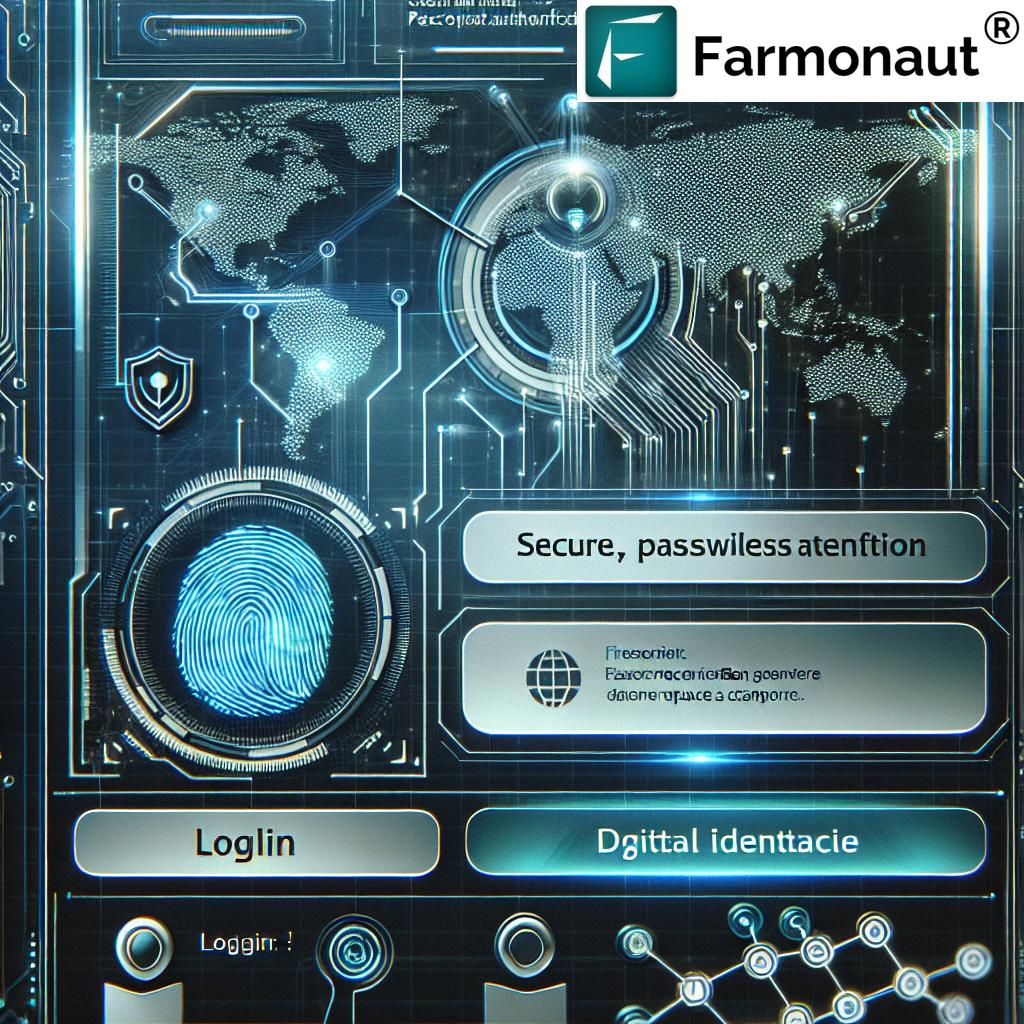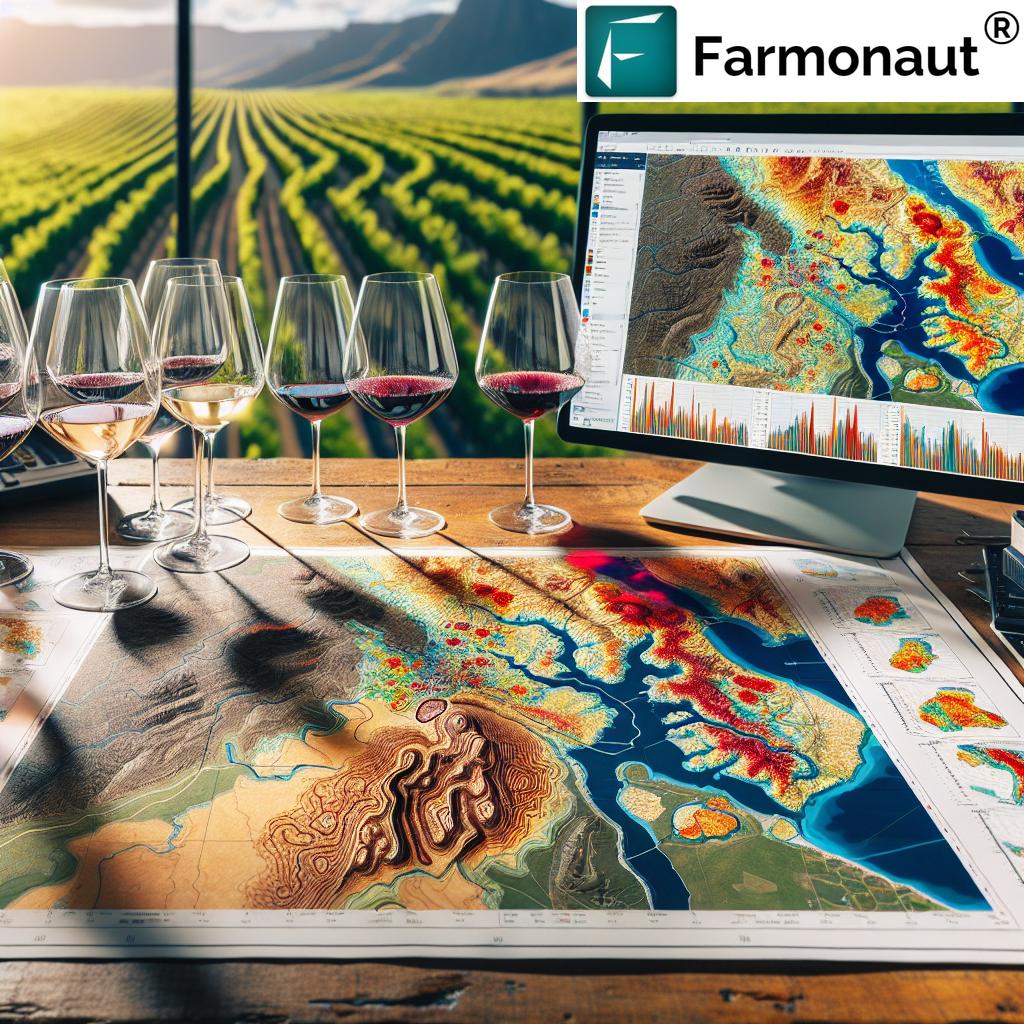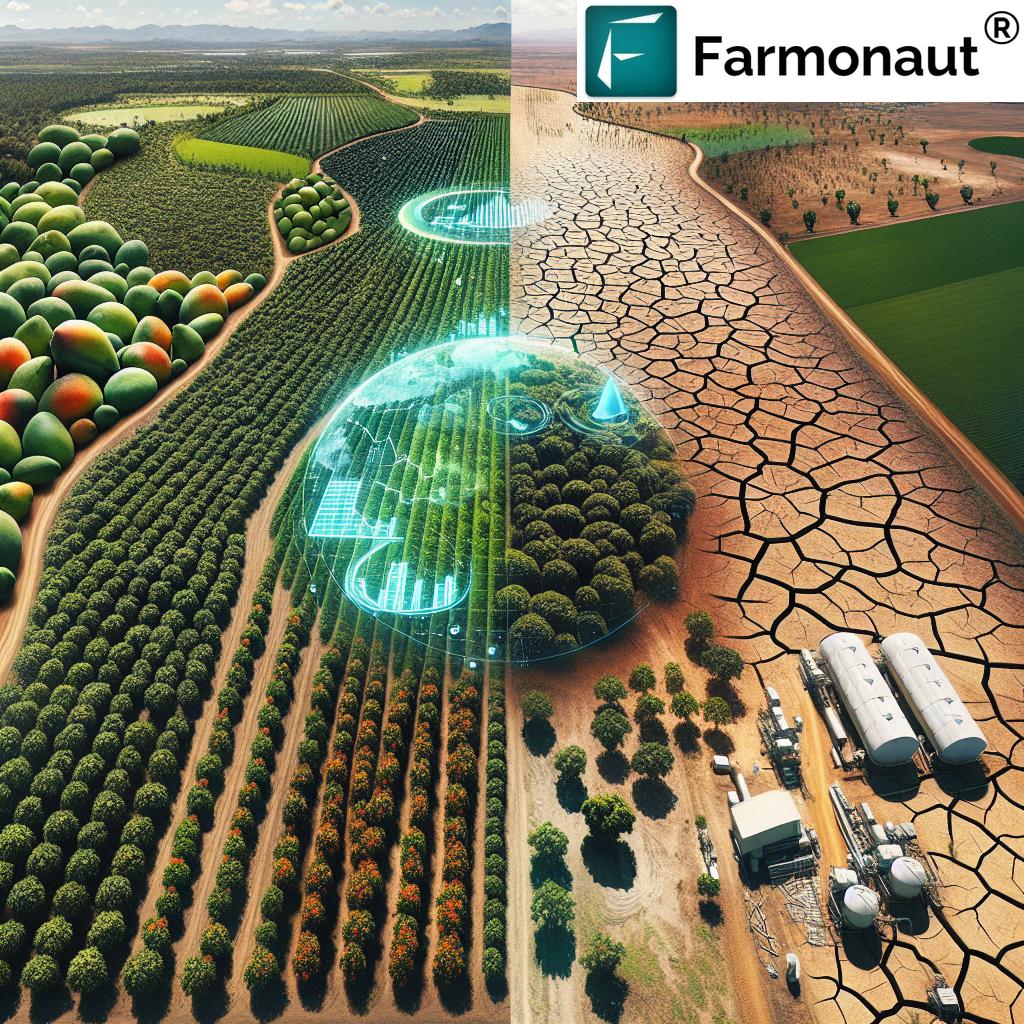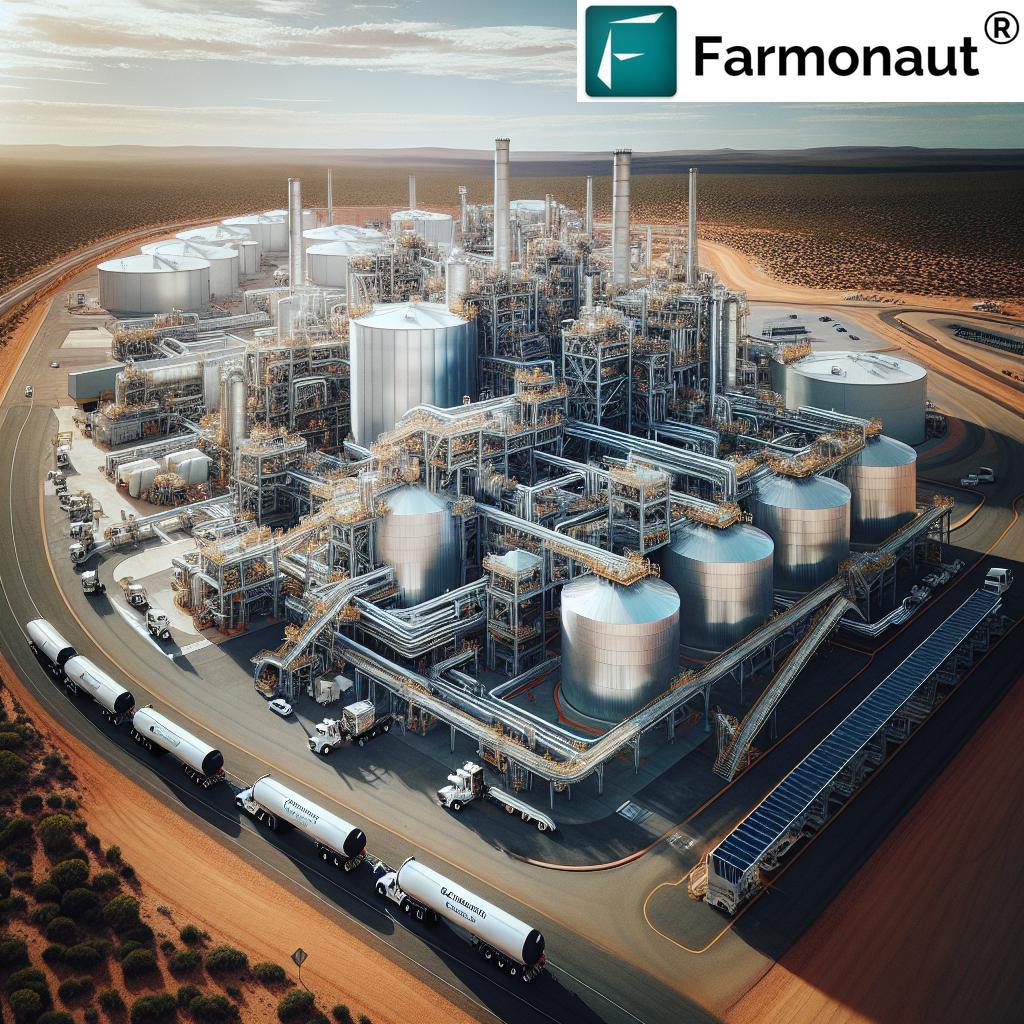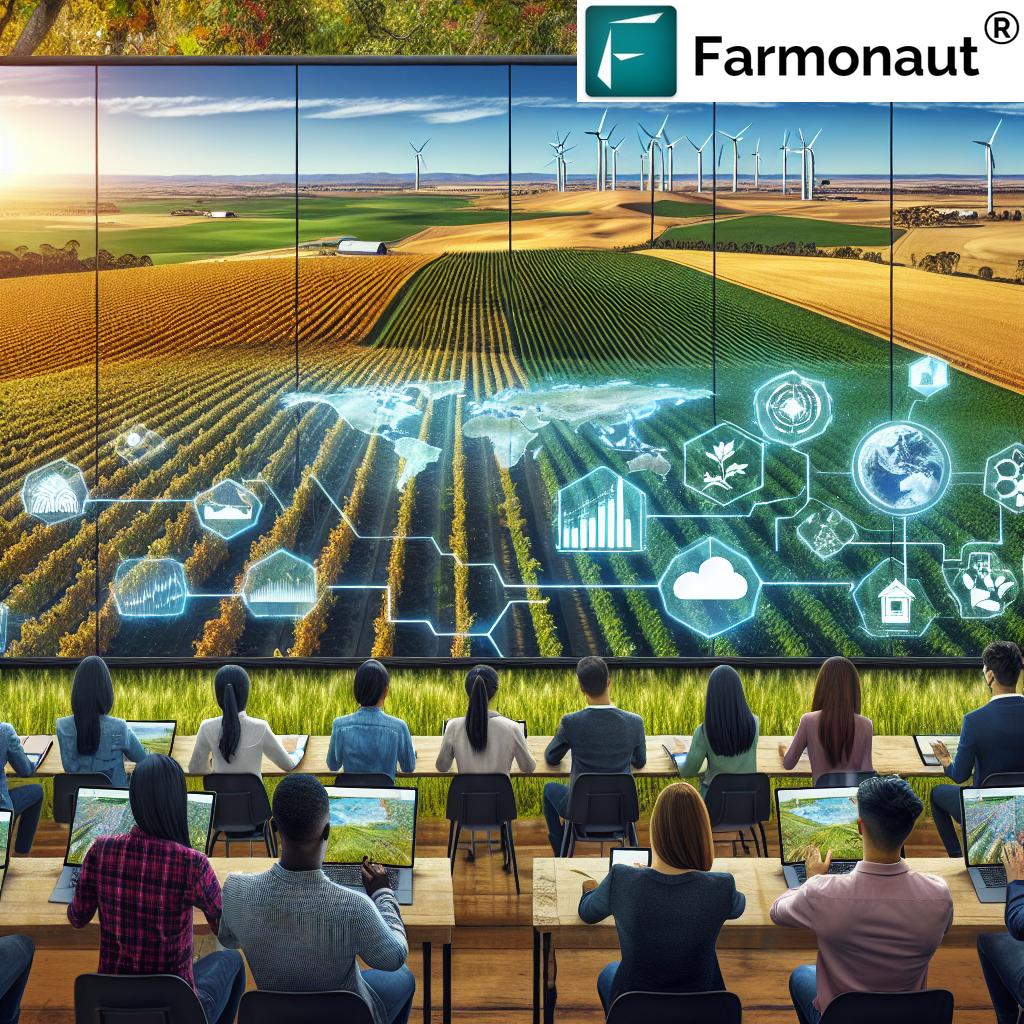Revolutionizing Sustainable Urban Development: How AI and AR Drive Environmental Innovation in Australia
“AI-powered digital twin technology can improve urban sustainability planning efficiency by up to 40%, according to recent studies.”
In the rapidly evolving landscape of sustainable urban development, Australia is emerging as a pioneer in leveraging cutting-edge technologies to address critical environmental challenges. As we navigate the complexities of climate change and resource management, the integration of Artificial Intelligence (AI) and Augmented Reality (AR) is transforming how we approach sustainability in our cities and communities.
At the forefront of this revolution are innovative companies like Farmonaut, which are harnessing the power of satellite technology and AI to revolutionize agricultural practices. While our focus today is on broader urban sustainability, it’s worth noting how these advancements in agritech are contributing to the overall picture of environmental innovation.
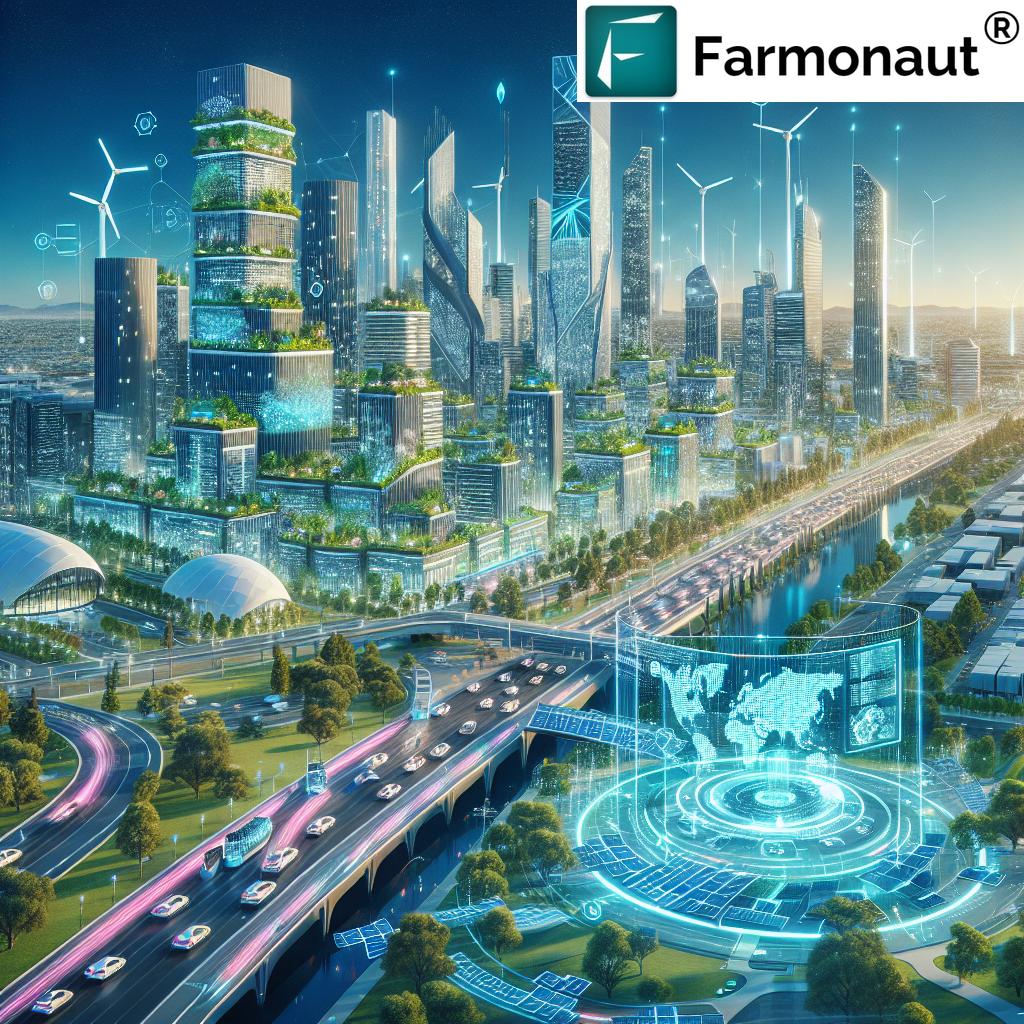
The Dawn of AI-Driven Sustainability Solutions
Sustainable technology solutions are at the heart of Australia’s commitment to environmental stewardship. By embracing AI and spatial technology, we’re witnessing a paradigm shift in how urban planners, government bodies, and businesses approach sustainability challenges. These advanced digital solutions are enabling more accurate, efficient, and actionable insights into complex environmental data.
Key areas where AI is making a significant impact include:
- Energy management optimization
- Infrastructure planning and development
- Resource allocation and conservation
- Real-time environmental monitoring
The integration of AI with sustainable urban development is not just about technological advancement; it’s about creating measurable outcomes that benefit communities and ecosystems alike. By harnessing the power of machine learning algorithms, we can analyze vast amounts of data to identify patterns, predict trends, and generate actionable insights that drive informed decision-making.
Augmented Reality: Visualizing a Sustainable Future
Augmented Reality is taking sustainable urban development to new heights by providing immersive digital experiences that enhance decision-making processes. AR technology allows stakeholders to visualize complex environmental data in real-time, superimposed on the physical world. This capability is revolutionizing how we plan, design, and manage sustainable urban environments.
Some key applications of AR in sustainability include:
- Virtual simulations of proposed infrastructure projects
- Interactive visualizations of energy consumption patterns
- Real-time overlay of environmental data on urban landscapes
- Enhanced public engagement in sustainability initiatives
By leveraging AR devices like the Apple Vision Pro, urban planners and environmental scientists can create immersive digital experiences that bring sustainability concepts to life. This not only improves the accuracy of planning and implementation but also facilitates better communication and collaboration among stakeholders.
Digital Twin Technology: A Game-Changer for Urban Sustainability
One of the most promising developments in sustainable urban planning is the emergence of digital twin technology. These virtual replicas of physical assets, processes, or systems are proving invaluable in simulating and optimizing urban environments for sustainability.
Digital twins allow us to:
- Model and test sustainability initiatives before implementation
- Monitor and manage urban systems in real-time
- Predict and mitigate environmental impacts
- Optimize resource allocation across city infrastructures
By creating digital twins of cities or specific urban areas, we can run complex simulations to understand the long-term effects of various sustainability measures. This technology enables us to make more informed decisions about everything from energy grid management to waste reduction strategies.
AI-Driven Sustainability Planning for Smart Cities
As Australia continues to develop smart cities, AI is playing a crucial role in integrating sustainability into every aspect of urban life. From intelligent traffic management systems that reduce emissions to AI-powered waste sorting facilities, these technologies are making our cities more efficient and environmentally friendly.
Key focus areas for AI in smart city sustainability include:
- Optimizing public transportation networks
- Enhancing energy efficiency in buildings
- Improving water management and conservation
- Facilitating the transition to renewable energy sources
By leveraging AI algorithms, cities can analyze vast amounts of data from various sources, including IoT devices, to make real-time adjustments that improve sustainability outcomes. This data-driven approach allows for more precise resource allocation and faster response times to environmental challenges.
“AR-enhanced environmental monitoring systems have increased accuracy in climate data analysis by 30% in Australian smart cities.”
Sustainable Energy Management Through AI and AR
One of the most critical aspects of sustainable urban development is energy management. AI and AR technologies are revolutionizing how we produce, distribute, and consume energy in our cities. By integrating these advanced digital solutions with existing energy infrastructure, we’re seeing remarkable improvements in efficiency and sustainability.
AI-powered energy management systems can:
- Predict energy demand with high accuracy
- Optimize the integration of renewable energy sources
- Detect and prevent energy waste in real-time
- Facilitate demand-response programs for peak load management
Meanwhile, AR is enhancing the way we interact with energy systems. Technicians can use AR devices to visualize complex energy networks, making maintenance and repairs more efficient. Consumers can use AR apps to see real-time energy usage data overlaid on their appliances, encouraging more sustainable behavior.
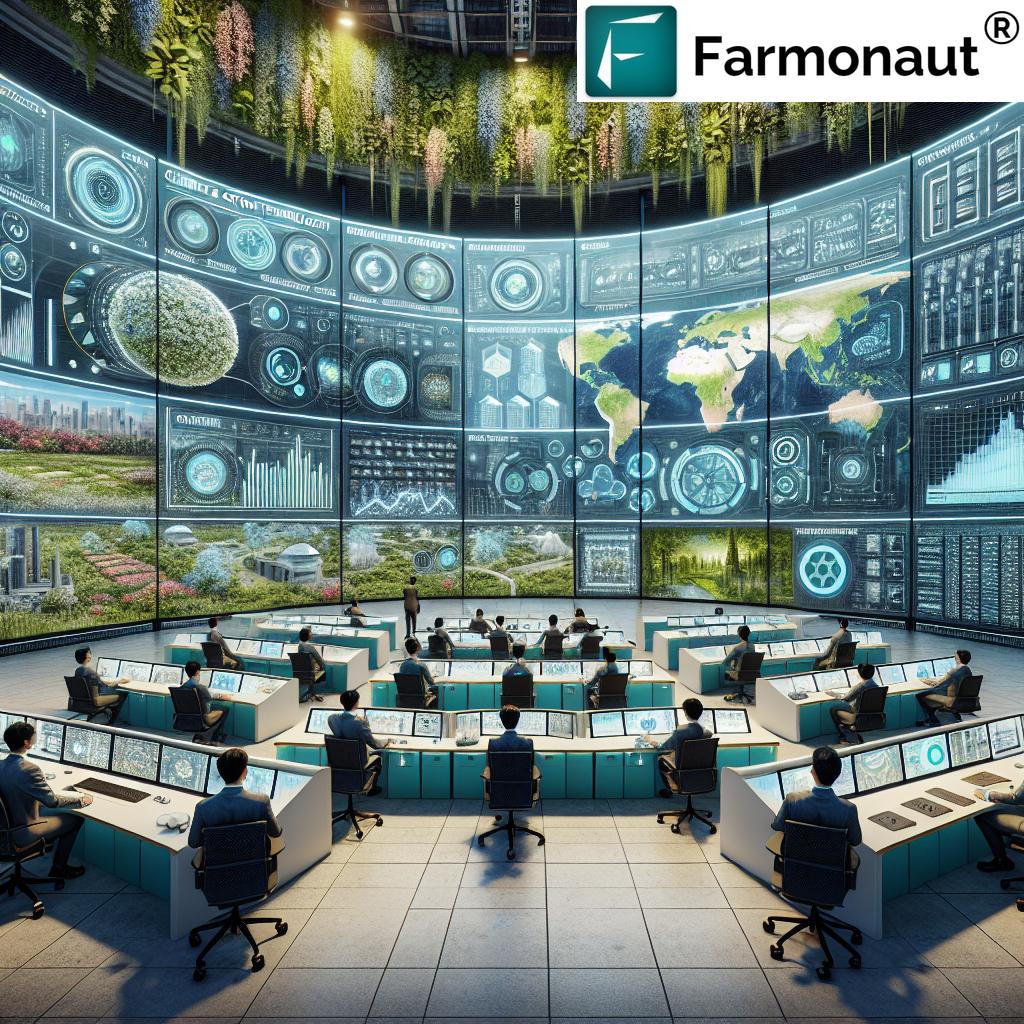
Environmental Data Visualization: Making the Invisible Visible
One of the most powerful applications of AI and AR in sustainable urban development is their ability to visualize complex environmental data. By transforming abstract numbers and statistics into intuitive visual representations, these technologies are making it easier for decision-makers and the public alike to understand and act on environmental information.
Benefits of advanced environmental data visualization include:
- Improved understanding of climate patterns and trends
- Enhanced ability to identify and address pollution hotspots
- More effective communication of environmental risks to the public
- Better-informed decision-making for urban planning and policy
For example, AR applications can overlay air quality data onto real-world views of cities, allowing residents to see pollution levels in their neighborhoods. AI algorithms can process satellite imagery to create dynamic maps of urban heat islands, helping planners identify areas that need more green spaces or reflective surfaces.
Integrating Sustainable Technology Solutions in Urban Infrastructure
The integration of AI and AR into urban infrastructure is a cornerstone of sustainable development in Australia. These technologies are being embedded into the very fabric of our cities, from smart buildings to intelligent transportation systems.
Key areas of integration include:
- Smart grids that optimize energy distribution
- Intelligent water management systems
- AI-controlled traffic lights that reduce congestion and emissions
- AR-enhanced maintenance of public infrastructure
By integrating these sustainable technology solutions, we’re creating more resilient and adaptive urban environments. For instance, AI can analyze traffic patterns and adjust signals in real-time to reduce congestion and lower emissions. AR can assist maintenance crews in quickly identifying and repairing leaks in water systems, conserving this precious resource.
Climate Action Technology: Empowering Informed Decisions
As we face the growing challenges of climate change, AI and AR are emerging as powerful tools for climate action. These technologies are enabling us to better understand, predict, and mitigate the impacts of climate change on our urban environments.
AI-driven climate models can:
- Predict extreme weather events with greater accuracy
- Simulate the long-term effects of climate change on cities
- Optimize climate adaptation strategies
- Track and report on greenhouse gas emissions in real-time
AR applications are making these insights more accessible and actionable. For example, urban planners can use AR to visualize sea-level rise scenarios, helping them make informed decisions about coastal development and flood protection measures.
The Role of Spatial Technology in Sustainable Planning
Spatial technology is playing a crucial role in sustainable urban development, providing the foundation for many AI and AR applications. By leveraging advanced Geographic Information Systems (GIS) and remote sensing technologies, we’re able to create highly accurate digital representations of our urban environments.
Benefits of spatial technology in sustainability planning include:
- Precise mapping of urban ecosystems and green spaces
- Accurate tracking of land use changes over time
- Enhanced ability to plan and optimize renewable energy installations
- Improved disaster risk assessment and management
Companies like Farmonaut are demonstrating the power of spatial technology in agriculture, using satellite imagery and AI to monitor crop health and optimize resource use. While their focus is on farming, the principles and technologies they employ have broad applications in urban sustainability.
For those interested in exploring Farmonaut’s innovative solutions, you can access their services through their  or by downloading their mobile apps:
or by downloading their mobile apps:
Actionable Insights for Sustainable Resource Management
One of the most significant advantages of AI and AR in sustainable urban development is their ability to provide actionable insights for resource management. By processing vast amounts of data from various sources, these technologies can identify patterns and opportunities for optimization that might be invisible to the human eye.
Key areas where AI is generating actionable insights include:
- Water conservation and management
- Waste reduction and recycling optimization
- Energy consumption patterns in buildings and industries
- Urban forest management and green space planning
AR technology is then making these insights more accessible and actionable by allowing stakeholders to visualize data in real-world contexts. For example, city planners can use AR to see potential water-saving interventions overlaid on actual city infrastructure, making it easier to prioritize and implement sustainable solutions.
Empowering Businesses and Governments for Effective Climate Action
The integration of AI and AR technologies is empowering both businesses and governments to take more effective climate action. By providing detailed, real-time data and predictive analytics, these tools are enabling organizations to make more informed, responsible decisions for a sustainable future.
For businesses, AI and AR can:
- Optimize supply chains for reduced environmental impact
- Enhance product design for sustainability and circularity
- Improve energy efficiency in operations and facilities
- Facilitate more accurate sustainability reporting and transparency
Governments are leveraging these technologies to:
- Develop more effective environmental policies based on data-driven insights
- Improve urban planning for sustainability and resilience
- Enhance public engagement in environmental initiatives
- Monitor and enforce environmental regulations more efficiently
By harnessing the power of AI and spatial technology, organizations can create impactful, sustainable innovations that drive real change in our urban environments.
The Future of Sustainable Urban Development in Australia
As we look to the future, the role of AI and AR in sustainable urban development is set to grow even more significant. These technologies will continue to evolve, offering even more powerful tools for addressing environmental challenges and creating smart, sustainable cities.
Some exciting prospects for the future include:
- AI-powered urban ecosystems that self-regulate for optimal sustainability
- Advanced AR interfaces that make sustainable living intuitive for all citizens
- Predictive maintenance systems that minimize waste and extend infrastructure lifespans
- Integrated city-wide digital twins for holistic sustainability management
As these technologies advance, it’s crucial that we continue to focus on creating measurable outcomes and delivering lasting community benefits through sustainable design solutions.
Comparative Impact of AI and AR on Sustainable Urban Development
| Sustainability Challenge | Traditional Approach | AI/AR-Driven Solution | Estimated Impact |
|---|---|---|---|
| Energy Management | Manual monitoring and adjustments | AI-powered smart grids with real-time optimization | 30% reduction in energy consumption |
| Infrastructure Planning | Static 2D models and projections | AR-enhanced 3D simulations with predictive analytics | 40% improvement in planning efficiency |
| Resource Optimization | Periodic audits and manual tracking | AI-driven real-time resource allocation and waste reduction | 25% increase in resource efficiency |
| Environmental Monitoring | Periodic sampling and manual reporting | Continuous AI analysis of sensor data with AR visualization | 50% faster response to environmental issues |
FAQs About AI and AR in Sustainable Urban Development
- How does AI improve energy efficiency in cities?
AI analyzes vast amounts of data from smart meters and sensors to optimize energy distribution, predict demand, and reduce waste, leading to significant energy savings. - What role does AR play in urban planning for sustainability?
AR allows planners to visualize proposed developments in real-world contexts, assess their environmental impact, and make more informed decisions about sustainable urban design. - How can digital twin technology benefit sustainable urban development?
Digital twins create virtual replicas of cities, enabling planners to simulate and optimize various sustainability initiatives before implementation, reducing costs and improving outcomes. - What are the challenges in implementing AI and AR for urban sustainability?
Challenges include data privacy concerns, the need for significant infrastructure investments, and ensuring equitable access to these technologies across all communities. - How can citizens benefit from AI and AR in sustainable urban development?
Citizens can access real-time environmental data, participate in virtual urban planning processes, and use AR apps to make more sustainable choices in their daily lives.
Conclusion: A Sustainable Future Powered by Innovation
The integration of AI and AR technologies in sustainable urban development is ushering in a new era of environmental innovation in Australia. By harnessing the power of these advanced digital solutions, we’re creating more efficient, resilient, and sustainable cities that are better equipped to face the challenges of the 21st century.
As we continue to push the boundaries of what’s possible with AI and AR, it’s clear that these technologies will play a crucial role in shaping the future of our urban environments. By embracing these innovations and focusing on creating measurable, positive outcomes, we can build a more sustainable and prosperous future for all Australians.
For those interested in exploring how technology can drive sustainability in other sectors, consider checking out Farmonaut’s innovative solutions in agriculture. Their use of satellite technology and AI offers valuable insights into how similar approaches can be applied to urban sustainability challenges.
Earn With Farmonaut: Join Farmonaut’s Affiliate Program
Earn 20% recurring commission with Farmonaut’s affiliate program by sharing your promo code and helping farmers save 10%. Onboard 10 Elite farmers monthly to earn a minimum of $148,000 annually—start now and grow your income!
As we forge ahead in our quest for sustainable urban development, let’s embrace the transformative power of AI and AR to create cities that are not just smart, but truly sustainable for generations to come.





